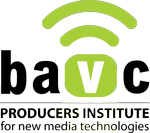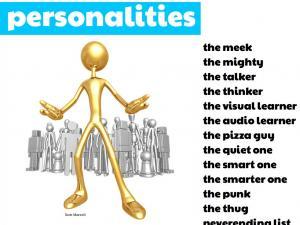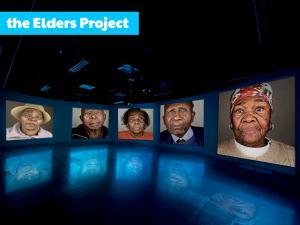 The first year at the Producer’s Institute for New Media Technologies, I was a production artist, but I knew something completely revolutionary was going on when I was receiving frantic emails and phone calls late in the evening that said things like this:
The first year at the Producer’s Institute for New Media Technologies, I was a production artist, but I knew something completely revolutionary was going on when I was receiving frantic emails and phone calls late in the evening that said things like this:
“Laura, I NEED YOU!!! if you can please call me at 2pm your time that is 5 am my time and wake me up please please please! Call Me – Abigail”
As a designer, I was being given the opportunity to help people tell their stories through the not so simple process of visualizing an idea. But at the Producer’s Institute it was never just about telling a story, it’s also about telling a story to as many people as possible AND inspiring those people to react.
The projects that come into PI have always been social justice projects, created by people trying to create social change. Combine that with technologists and it’s a crazy ten days of creativity and super fast production for the public good.
This project from year one, Not in Our Town, gave the general public a mechanism to map hate crimes as well as anti hate actions. The project engaged by showing how prevalent hate crimes are and then it suggested action. At this point, it’s not just telling a story, but showing quickly and easily what a person can do to change the story.
A year later, in 2008, I flew to San Francisco to participate again. That was the year I realized what the Producers Institute was actually doing.
Beyond inviting these film projects to think about a larger scale of social change, the Producers Institute is creating filmmakers that are also technologists and geeks who are using their skills for social good.
When the film the Reckoning came to the Producers Institute, they had no idea they would start creating something that allowed them to collect data from mobile phones and social networks. Now one of IJ Central‘s most central components in helping individuals to press political leaders to follow the mandates of the International Criminal Court is networking through SMS.
Trying to go from concept to polished presentation with 30 personalities in the building in only ten days is a lot like playing whack a mole. We have to deal with the problems when they come up, and fast.
It’s a pressure cooker. There’s always the meek, the mighty, the person who won’t shut up, the genius who no one understands, the visual person who is visualizing the wrong thing, the group who wants an extra week and then that guy comes in and interrupts you in your most important thought to tell you that pizza is there.
Side Note – awesome food.
From my perspective, 2009 is the year that we really hit our stride. It’s also the year I stopped being “just” a production artist and started collaborating with groups to inspire them to think about possibilities they might not have considered. In 2009, the mentors started interacting on a much deeper and more conceptual level. Projects that were incubated in 2009 pushed the boundaries of what was possible more than ever before.
We were visualizing physical spaces, interactive spaces, emotional spaces. 
The Waiting Room will be engaging the community through interactive story booths very soon and the Way We Get By has collected and made accessible hundreds of stories from veterans with their Returning Home Project.
The passion of the participants for their cause combined with the passion of the mentors for technology led to innovation and because we realized the potential of that, the value in that – because we realized that there’s a difference between
“this is a cutting edge technology” and “this isn’t possible yet, but it should be”
– we began to push our boundaries farther.
In the beginning we were using tools that existed and repurposing them for the social justice realm, and we’re still doing that, there’s no reason to reinvent the wheel. But now we’re also imagining completely new tools.
In 2010 we inspired projects to think and act globally and locally at the same time. We were imagining tools for mobile phones and tablet computers as well as online spaces. We were creating augmented reality apps and mapping projects that TOLD STORIES.
 And this year, we got out of San Francisco and went to New York, the change of venue didn’t even faze us much, though BAVCs facility is, you know, cutting edge. The running up and down stairs got a little exhausting, but the creativity and cross collaboration was right on track. Just six months ago, we incubated AXS Map, which is now available in the App Store.
And this year, we got out of San Francisco and went to New York, the change of venue didn’t even faze us much, though BAVCs facility is, you know, cutting edge. The running up and down stairs got a little exhausting, but the creativity and cross collaboration was right on track. Just six months ago, we incubated AXS Map, which is now available in the App Store.
And then this past week happened (June 10 – 19). For the first time we incubated projects relating to a theme. Science. This week, we did what we do. We gave social justice activists new colors in their palette. We empowered them to appreciate, explore and play with new mediums. They gave us work that is important in the world, they allowed us to play activist. This week we we just did what we do.
- We collaborated.
- We created.
- We learned.
- We taught.
- We shared.